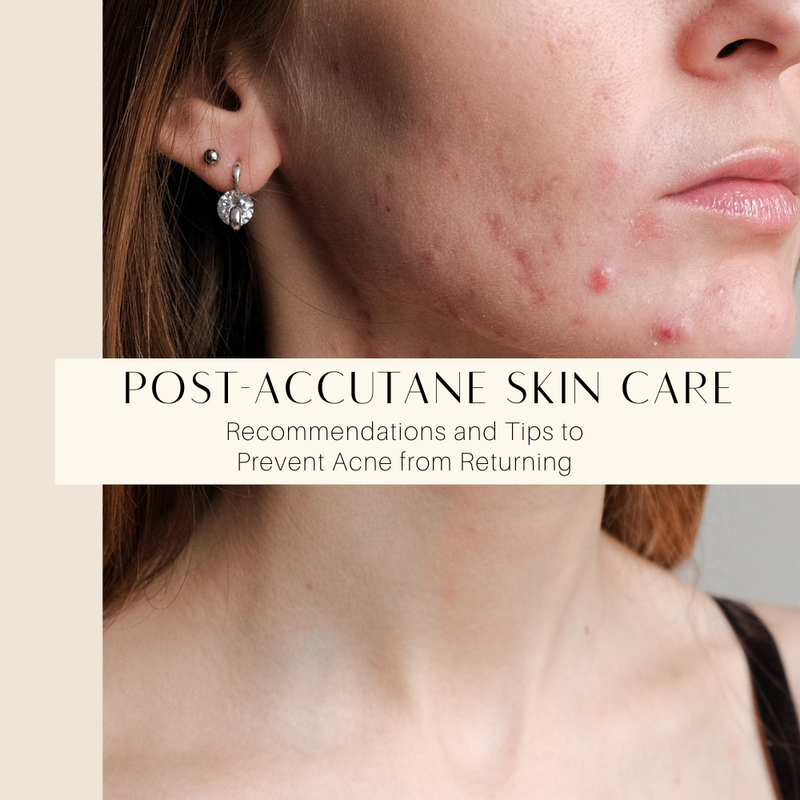Post-Accutane Skin Care: Recommendations and Tips to Prevent Acne from Returning

Real Story: Sarah's Acne Came Back
Sarah, 24, came to our clinic six months after completing a 6-month course of Roaccutane. Her skin had been clear for a while, but gradually, oily shine returned to her T-zone, followed by small breakouts on her jawline and cheeks.
When we examined her skincare routine, it became clear: she’d gone back to using heavy, fragranced moisturisers and had stopped using SPF daily. She also hadn’t reintroduced any active ingredients to maintain her skin health.
Her story is a reminder: acne-prone skin remains acne-prone, even if it’s clear now. Long-term prevention is key.
Roaccutane (Isotretinoin) is often a last-resort, life-changing treatment for those suffering from severe acne. While many patients experience dramatic improvements, it’s not the end of the skincare journey—it’s the beginning of a new one.
After completing a course of Roaccutane, your skin is more sensitive, delicate, and vulnerable. Without the right post-treatment skincare and lifestyle habits, acne can creep back in. At our clinic, we often see patients return months later, frustrated and confused as old breakouts reappear.
Here’s what you need to know to care for your skin after Roaccutane—and how to stop acne from making a comeback.
Why Skin Needs Extra Care After Roaccutane
Roaccutane works by drastically reducing oil (sebum) production, shrinking sebaceous glands, and preventing clogged pores. However, it also thins the skin, compromises its natural barrier, and increases sensitivity to environmental factors.
After treatment, your oil glands gradually begin to function again. If you're not maintaining a preventative skincare routine, you risk slipping back into the same skin issues—especially if acne triggers (like hormones, poor diet, or incorrect products) are still present.
Post-Roaccutane Skincare Tips: What You Should Be Doing
1. Hydrate, Don’t Suffocate
- Use lightweight, non-comedogenic moisturisers (look for ceramides, hyaluronic acid, and niacinamide).
- Avoid thick occlusive products or coconut oil-based formulas, which can clog recovering pores.
2. SPF Is Non-Negotiable
- Your skin remains UV-sensitive for months post-treatment.
- Use a broad-spectrum SPF 30+ daily, even in winter.
3. Gentle Cleansing Only
- Stick to sulphate-free, fragrance-free cleansers.
- Avoid harsh scrubs or exfoliating brushes.
4. Reintroduce Active Ingredients Slowly
Once your skin has stabilised (typically 2–3 months post-treatment), introduce:
- Niacinamide to regulate oil
- Azelaic acid or retinol (with guidance) to prevent clogged pores
- Salicylic acid in low concentrations for maintenance
5. Professional Treatments Can Help
Light chemical peels, LED therapy, or gentle resurfacing treatments can keep pores clear and fade residual marks—only under professional guidance.
6. Watch Your Lifestyle Triggers
High-sugar diets, unmanaged stress, and poor sleep habits can reactivate acne.
Consider tracking your cycle if hormonal breakouts were part of your history.
Prevention is Long-Term Skin Management. Think of Roaccutane as a reset button—not a cure. The goal after treatment is to maintain your results through smart skincare, regular check-ins, and professional guidance. Not sure where to start? Book a skin consultation with one of our skin experts: CLICK TO BOOK